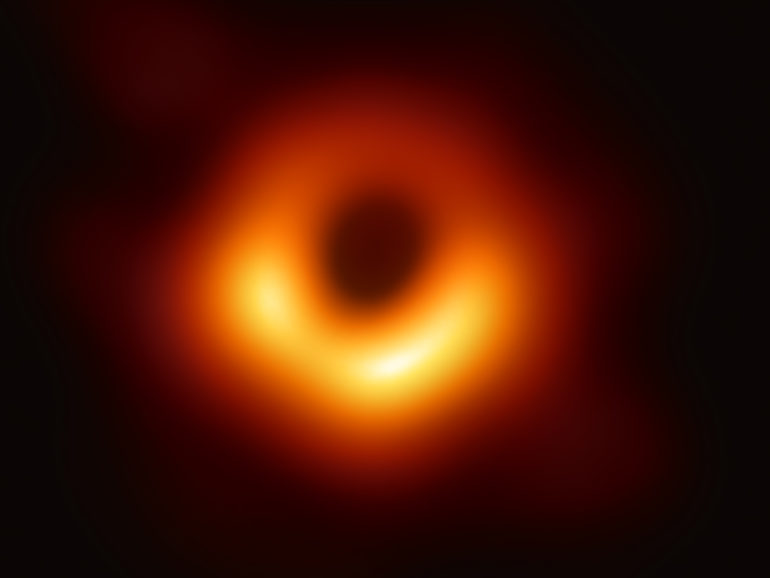A ridiculous scientific paper could show one journal’s failure to review, and could even be generated by A.I.Peer review is complicated, and isn’t the same as fact checking or analysis—but this is wild.It all started when scientists found a black hole at the center of the Earth …
Scientists have uncovered a bizarre, indefensible paper that squeaked through peer review at what appears at first pass to be a legitimate medical journal. Expert responses to the report are funny, but the research represents some key items of interest in science publishing and academia more broadly.
🤯 The world is f#@!-ing weird. Let’s explore it together.
In “A Black Hole at the Center of Earth Plays the Role of the Biggest System of Telecommunication for Connecting DNAs, Dark DNAs and Molecules of Water on 4+N- Dimensional Manifold,” published last year in the Open Access Macedonian Journal of Medical Sciences, 13 listed authors from wildly different fields throw together a series of escalating falsehoods. “Recently, some scientists from NASA have claimed that there may be a black hole like structure at the centre of the earth,” the abstract begins.
This content is imported from Twitter. You may be able to find the same content in another format, or you may be able to find more information, at their web site.
It only gets crazier from there:
“The earth’s core is the biggest system of telecommunication which exchanges waves with all DNAs and molecules of water. Imaging of DNAs on the interior of the metal of the core produces a DNA black brane with around 109 times longer than the core of the earth which is compacted and creates a structure similar to a black hole or black brane. We have shown that this DNA black brane is the main cause of high temperature of core and magnetic of earth.”
IFL Science points out that scientists occasionally float garbage into the peer review system to make sure it’s still working, but it’s not entirely clear that this paper is garbage on purpose.
IFLS found some of the authors have been involved in previous wild and questionable papers, suggesting an ecosystem of either fakers or conspiracy theorists.
This content is imported from Twitter. You may be able to find the same content in another format, or you may be able to find more information, at their web site.
Another of the group’s papers begins, “First group couple to our universe from one side and produce matters like some genes of DNAs and couple to an anti-universe from another side with opposite sign and create anti-matters like some anti-genes of anti-DNAs.”
This content is imported from {embed-name}. You may be able to find the same content in another format, or you may be able to find more information, at their web site.
If this sounds like word salad to you, you’re not alone. One of the theories to explain the paper is that it was generated using “peer-review-tricking” artificial intelligence, which shuffles key terms and phrases and glues them together into something almost coherent. The technology to do work like this gets more sophisticated all the time. A.I. can almost write sitcom scripts, and job applicants must “optimize” their resumes since so many are now scanned by keyword-seeking bots before they ever make it to a human.
The paper’s references are also a nonsense buffet, mixing keywords from the paper (“dimension,” “dark DNA,” and most symbolically telling, “braneless”—all brought in out of context) with some wholly unrelated or even incomplete citations. At least one of the authors, “Cota Linda,” has four papers that appeared in the same month in the same journal.
📥 Make your inbox more awesome.
Bystanders often talk about peer review like it’s a way to ensure a paper is factually correct, but that’s not always the outcome, and it’s not even the goal. Sometimes, legitimate scientific or mathematical work is so complex that even “peers” struggle to analyze it, especially in the short time frame before publication. And now that more civilians are savvy about using peer-reviewed sources, for example, there could be journals that tick the boxes in the most minimal way in order to claim they’re peer-reviewed.
IFLS points out that one of the authors previously published about predatory journals, which typically have a less legitimate footprint than the Macedonian Journal of Medical Science. Could it be that a totally good-faith peer review process decided to air these ideas as representative of real work? Maybe, but that’s hard to believe even with the credulity sliders pushed all the way up. It seems more likely that the process has gone wrong at this particular journal.
In the meantime, though, we’ll meet you at that black hole at the center of Earth.
This content is created and maintained by a third party, and imported onto this page to help users provide their email addresses. You may be able to find more information about this and similar content at piano.io



